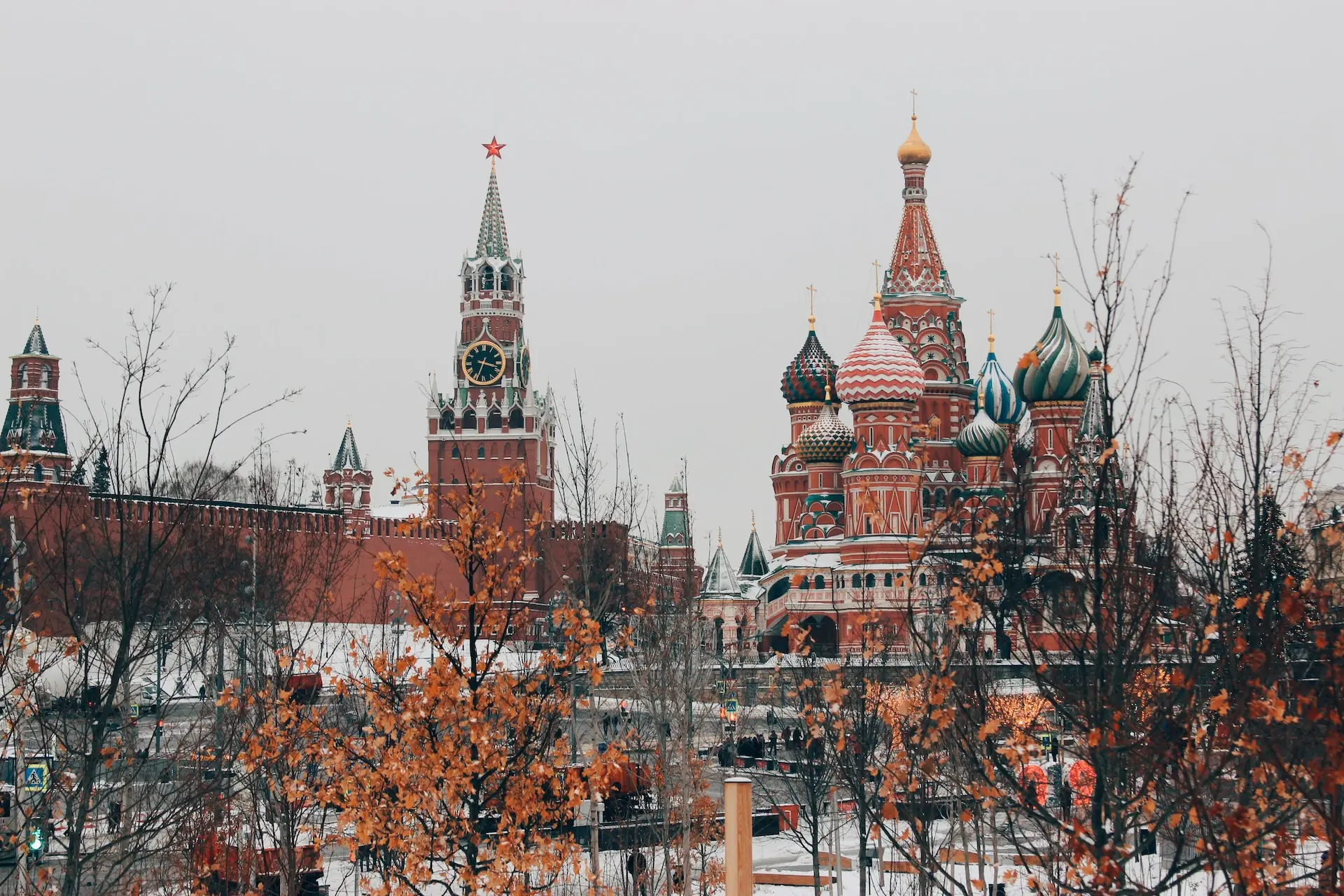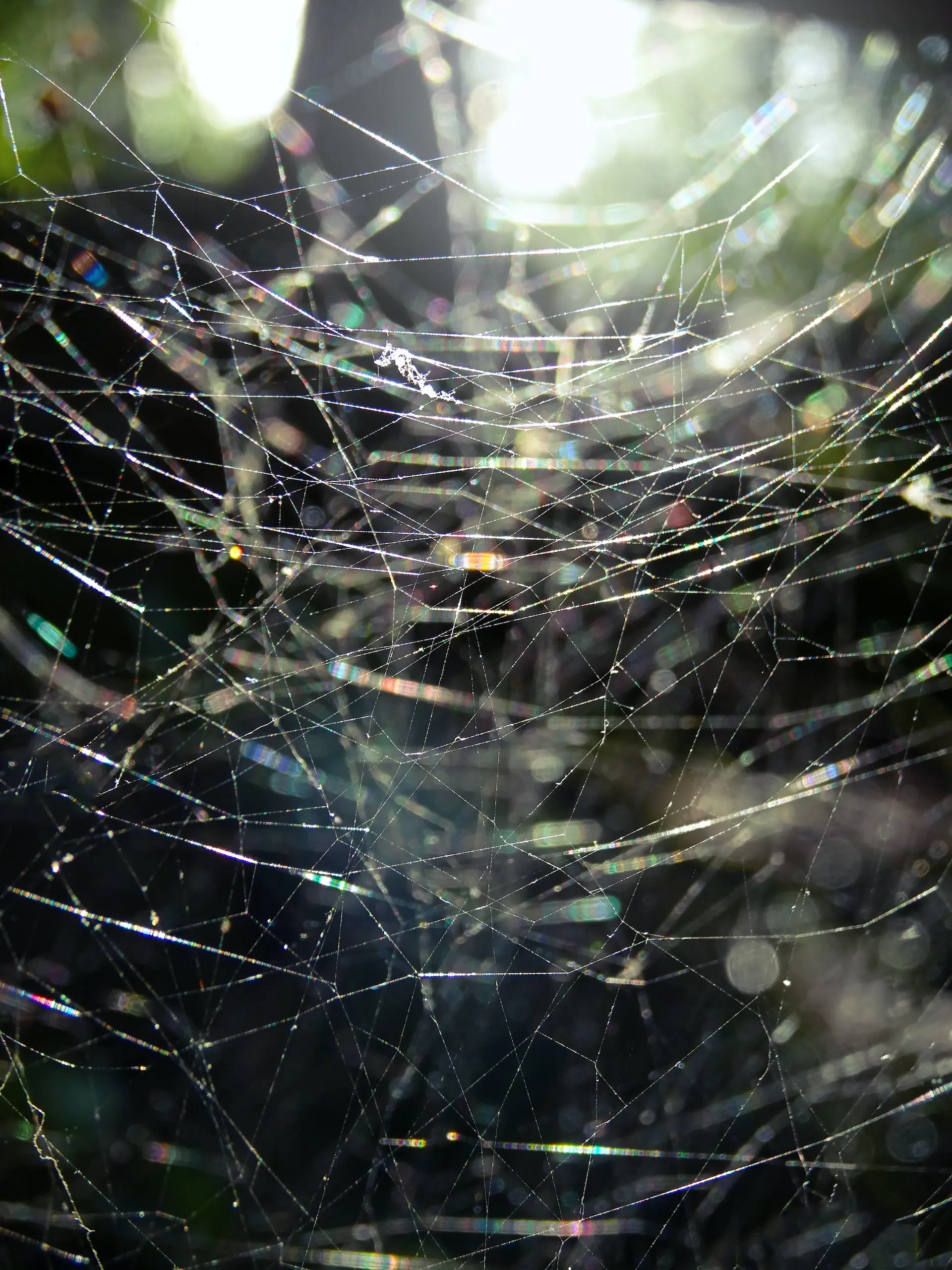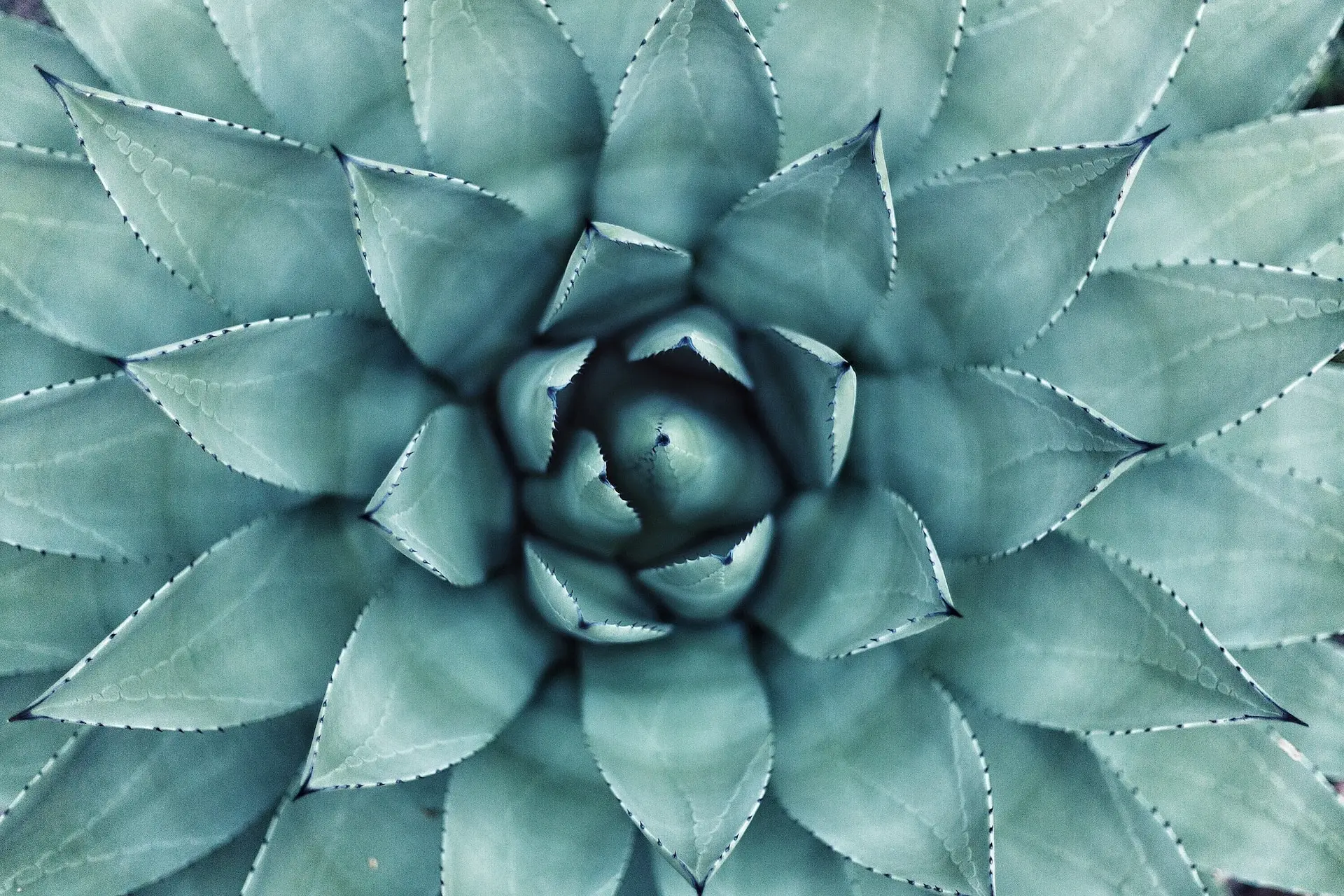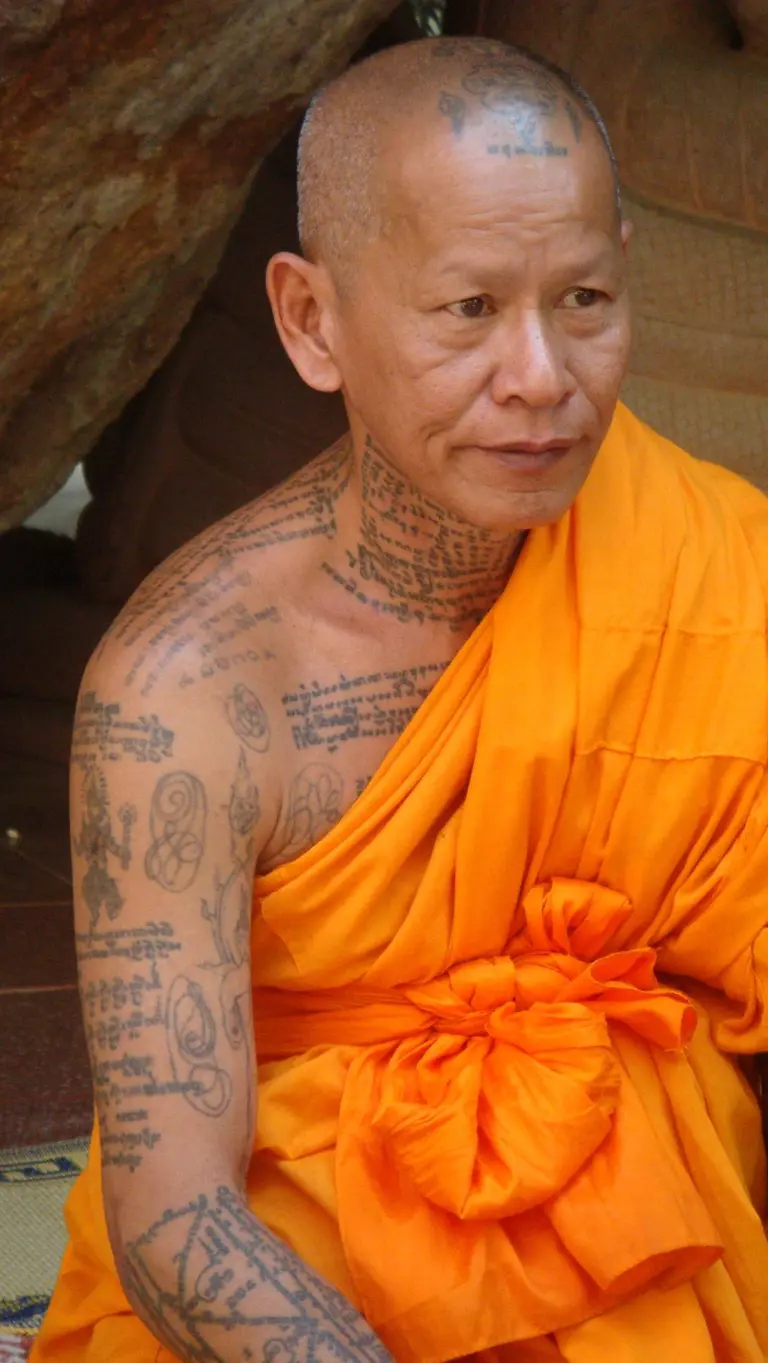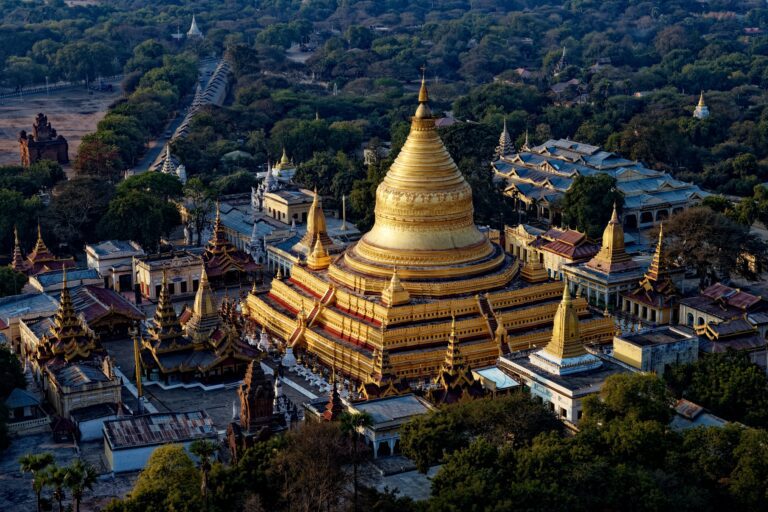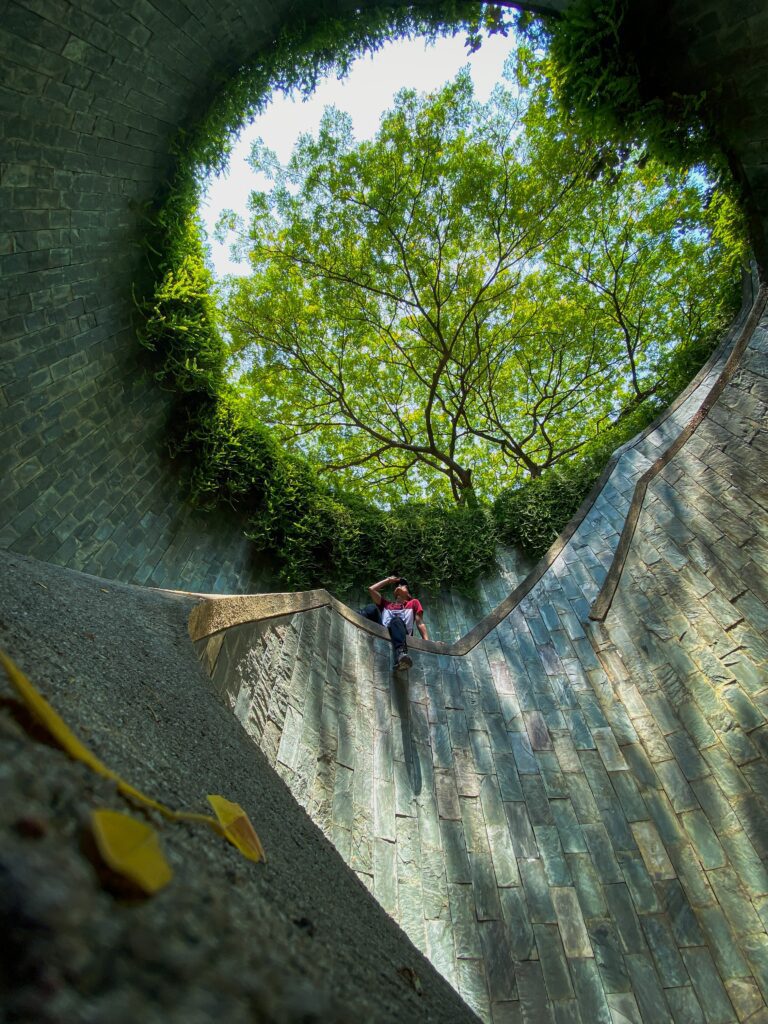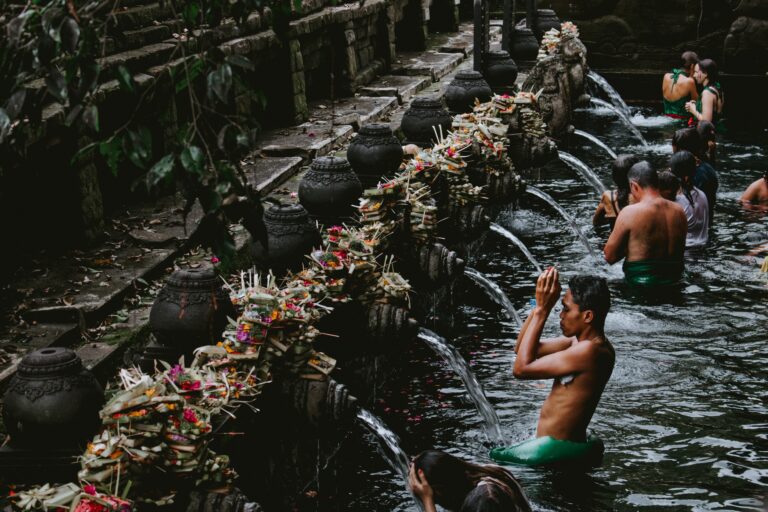Colombo.
It’s a city that feels like a Sunday morning. Easy, yet full of possibilities.
Walking its streets, you can’t help but feel drawn in by the mix of scents, sounds, and colors. It’s chaotic at times, sure, but in a way that makes you feel alive.
You’ll find history etched in every corner, telling tales of times gone by. And yet, there’s a pulse of the new, with cafes and galleries popping up in the most unexpected places.
Eating here is like being invited to a family dinner, every dish served with a side of stories. And as the day fades, the sunset over the ocean reminds you that, while everything changes, some beauties remain constant.
It’s not just a place to visit; it’s a place to feel, to breathe, to live—even if just for a while.
Table of Contents
Toggle
History of Colombo
Originally a small seaport used by traders from Asia and the Middle East, its fate changed dramatically with the arrival of the Portuguese in the 16th century. They saw Colombo’s strategic value, nestled on the west coast of the island, its harbor a gateway to the Indian Ocean. They built a fort, marking the beginning of European influence that would shape the city for centuries to come.
The Dutch followed in the 17th century, leaving their own mark with intricate canals and robust architecture, elements that still stand out in parts of the city today. Their fortifications and buildings added layers to Colombo’s identity, blending with the local Sri Lankan spirit.
But it was under British rule in the 19th and early 20th centuries that Colombo transformed into the bustling urban center we know today. They expanded the harbor, built new roads, and laid down railways, turning Colombo into the economic and administrative heart of Sri Lanka. The British influence is evident in the colonial buildings dotting the city, from grand government houses to the old General Post Office.
Independence in 1948 was a turning point, ushering in a new era of self-identity and growth. Colombo embraced its past while stepping confidently into the future, blending its colonial architecture with modern skyscrapers and developments.
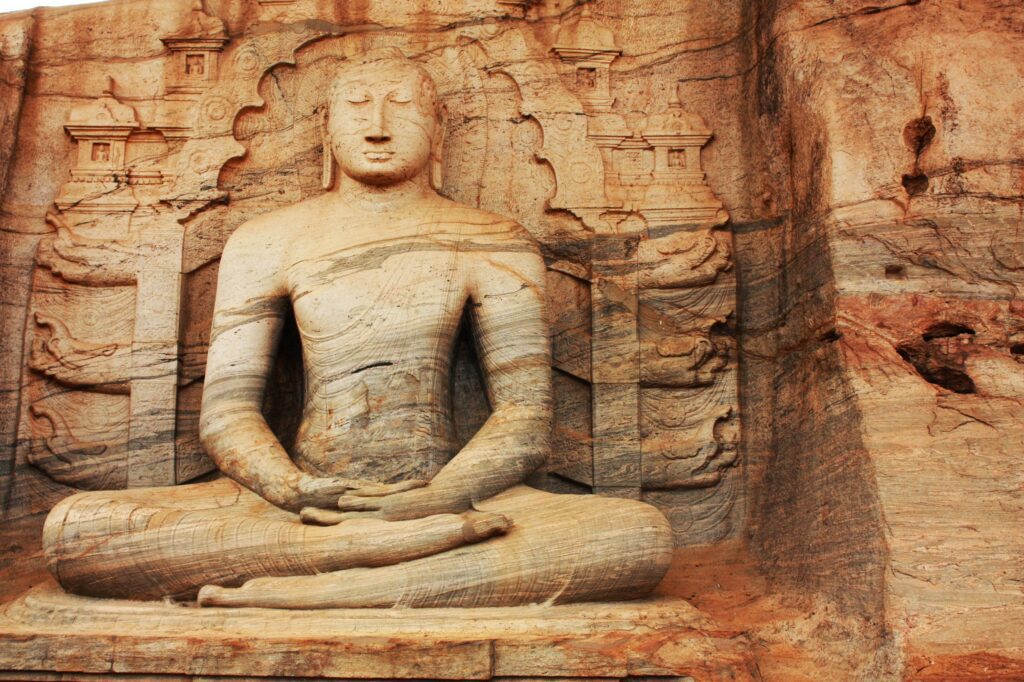
Sri Lankan Cultural Overview
At the core of Sri Lankan culture are the people of Sri Lanka, a harmonious blend of ethnicities including the Sinhalese, Tamil, Moor, and Burgher communities.
Spirituality is a guiding force in Sri Lanka, with Buddhism (specifically Theravada Buddhism) casting a serene influence over the island’s way of life. The presence of Hinduism, Islam, and Christianity also enriches the spiritual dialogue.
Traditional Kandyan dance performances, with their elaborate costumes and rhythmic drum beats, invite you to explore the island’s royal heritage. Yet, this is just the curtain raiser to a rich world of visual and performing arts waiting to be discovered in fuller detail.
For those eager to dive deeper into the heart of Sri Lanka’s cultural landscape, you can discover more on my article on Sri Lankan Culture.
Best Places to Visit in Colombo
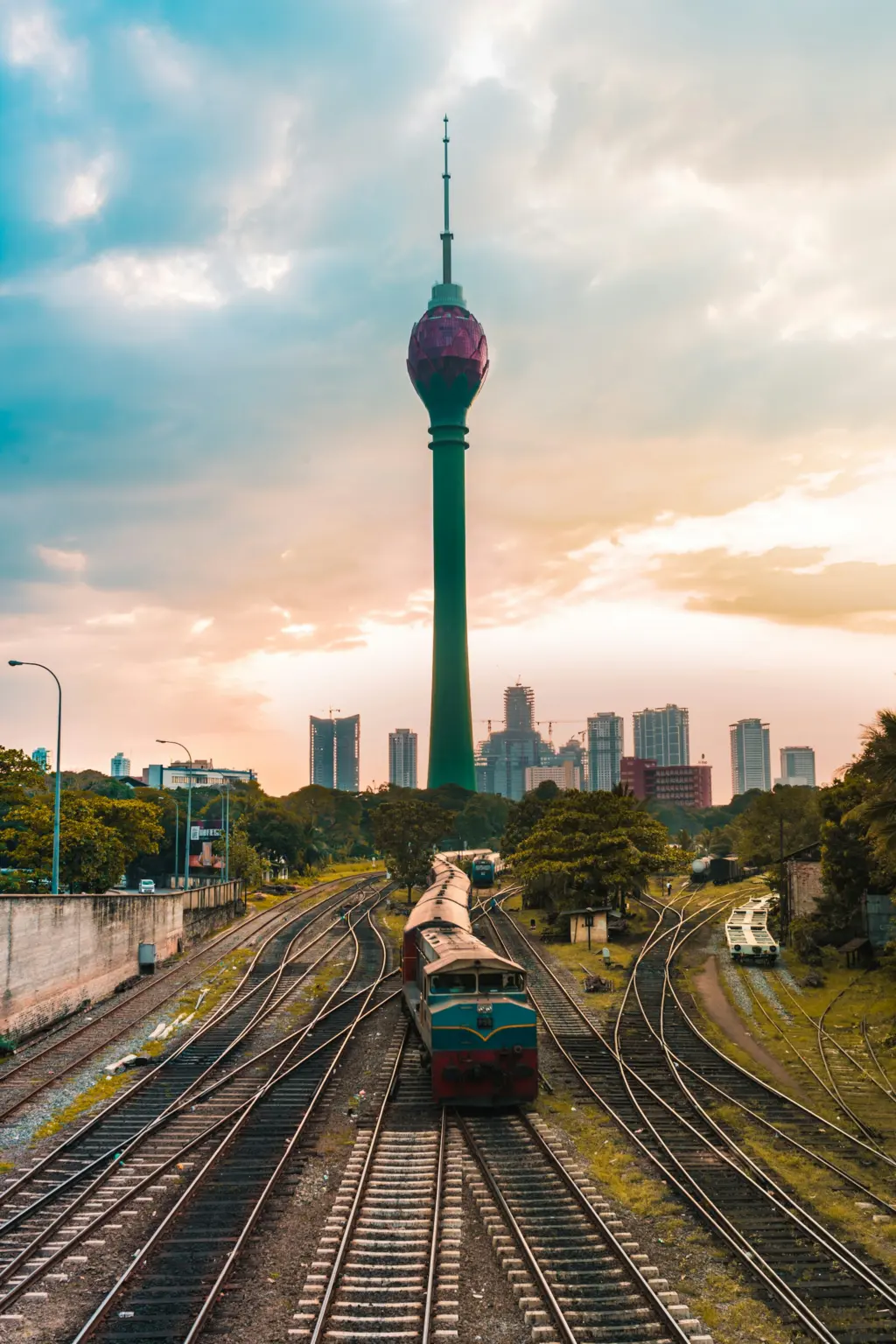
1. Lotus Tower
The Lotus Tower, or Nelum Kuluna, stands as an iconic symbol of Sri Lanka, majestically rising above the skyline of Colombo. Officially recognized as South Asia’s tallest tower, it reaches an impressive height of 350 m (1,150 ft), offering panoramic views that stretch across the bustling city and into the azure horizon of the Indian Ocean.
Designed to resemble the sacred lotus flower, a symbol of purity and enlightenment in Sri Lankan culture, the tower’s architecture is both a nod to the country’s rich heritage and a statement of its aspirations towards modernity and development.
You can ascend to its observation decks for breathtaking vistas, dine in revolving restaurants that offer a 360-degree sweep of the city below, or explore the digital museum and shopping complex housed within its base.

2. Colombo National Museum
The Colombo National Museum, established in 1877 by Sir William Henry Gregory, the British Governor of Ceylon at the time, is the largest museum in Sri Lanka.
Housed in a magnificent two-story colonial building, its architecture is a striking example of Italianate style, characterized by ornate detailing, high ceilings, and grand columns, creating a backdrop that is as historic as the artifacts it houses.
The museum’s collection is vast and varied, encompassing a wide range of Sri Lankan artifacts, including ancient royal regalia, carvings, sculptures, and an impressive array of antique demon masks that reflect the island’s vibrant cultural traditions.

3. Independence Square
The park’s namesake is due to the Independence Memorial Hall, an iconic structure built to commemorate Sri Lanka’s independence from British rule on February 4, 1948.
The meticulously maintained gardens, lush greenery, and tranquil atmosphere provide a refreshing contrast to the urban sprawl of Colombo.
The centerpiece of the park is the Independence Memorial Hall, an architectural marvel inspired by the Magul Maduwa, the ancient audience hall where the Kandyan kings held court. Its stone pillars, intricate carvings, and traditional Kandyan roof designs pay homage to Sri Lanka’s rich cultural heritage.
If you’re interested in seeing Colombo through the eyes of a local, you can join this tour that visits Independence Square along with other hidden gems!

4. Gangaramaya Temple
Situated near the tranquil Beira Lake, Gangaramaya Temple complex is a striking amalgamation of architectural styles, blending Sri Lankan, Thai, Indian, and Chinese influences.
Founded in the late 19th century by Venerable Hikkaduwe Sri Sumangala Nayaka Thera, Gangaramaya has evolved from a simple monastery offering vocational training to monks into a comprehensive center of learning and worship.
One of the temple’s most striking features is the Bodhi tree, grown from a sapling of the sacred Bodhi tree in Anuradhapura, which comes from a sapling of the original Bodhi tree on Bodh Gaya under which Lord Buddha is said to have attained enlightenment.

5. Sri Kaliawasanathar Swami Devasthanam Temple
Sri Kailawasanathan Swami Devasthanam Temple, also known as the Kapikaawatha Shiva Temple, is one of the oldest and most venerable Hindu temples in Colombo.
Dedicated to the deities Lord Shiva and Ganesha, this temple serves as a major spiritual center for the Hindu community in the city.
The entrance is adorned with a towering Gopuram, a monumental tower richly decorated with sculptures of Hindu gods and goddesses, narrating tales from ancient scriptures.

6. Koneswaram Temple
Koneswaram Temple, perched atop Swami Rock in Trincomalee, is one of the Pancha Ishwarams – five ancient Shiva temples established to protect the island from natural disasters.
The origins of Koneswaram Temple trace back to antiquity, with references to it found in ancient Indian texts, suggesting its existence over two millennia ago.
Throughout history, Koneswaram has faced periods of destruction and reconstruction, notably during the 16th century when the Portuguese demolished the original structure. However, the devotion of its followers ensured its revival in the 20th century, restoring its status as a major center of Hindu worship and pilgrimage.
The architecture of Koneswaram reflects a blend of classical Dravidian elements, with its intricately carved gopuram and statues of Hindu deities, including a majestic statue of Lord Shiva.
Hidden Gems in Colombo

7. Jami Ul-Alfar Masjid
The Red Mosque, officially known as Jami Ul-Alfar Masjid, was constructed in 1909. It’s one of the places I made sure to visit while I was in Colombo.
The mosque was designed to meet the growing needs of the local Muslim community. Its unique design reflects a blend of Indo-Saracenic, Gothic, and Neo-Classical architectural styles.
The mosque’s exterior, with its candy-striped patterns and elaborate arches, invites curiosity, while the interior offers a peaceful sanctuary for prayer and reflection. It’s perhaps one of the most photogenic spots in Colombo, just be sure to be respectful.
8. Vihara Maha Devi Park
The park is named in honor of Queen Viharamahadevi, the mother of King Dutugemunu, a legendary hero in Sri Lankan history.
Covering several hectares, Vihara Maha Devi Park is the largest park in Colombo and features beautifully landscaped gardens, wide open spaces, and shaded pathways, making it a perfect retreat from the city’s hustle and bustle.
The park’s well-maintained lawns, flowering trees, and vibrant flower beds offer a colorful and serene environment ideal for leisurely walks, picnics, and family outings.
Top Things to Do in Colombo
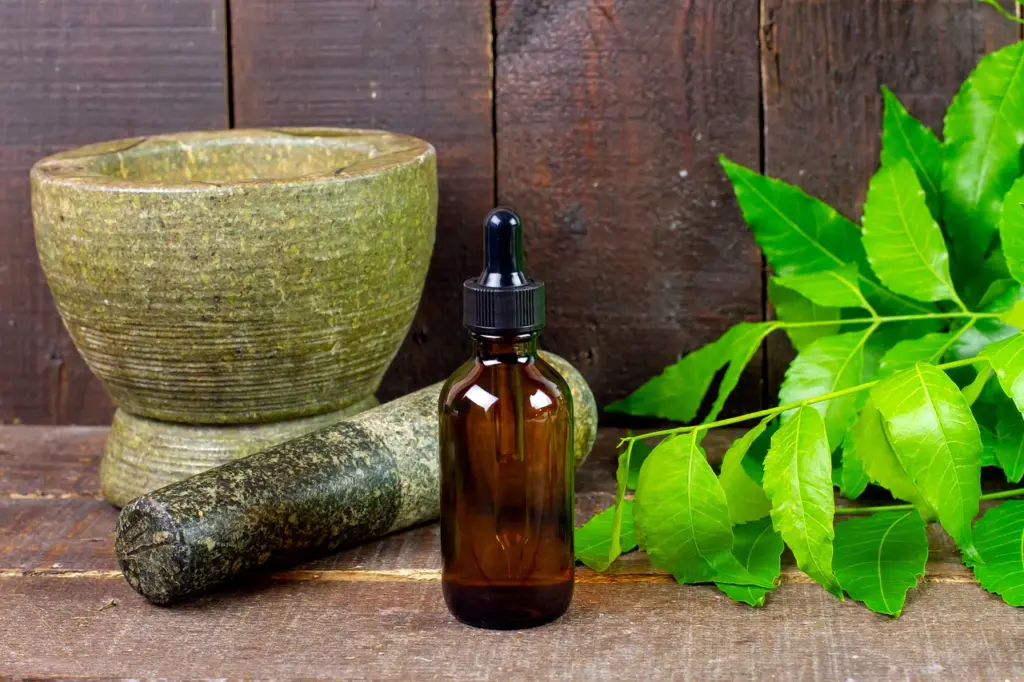
9. Try an Ayurvedic Massage
Experiencing an Ayurvedic massage is a journey into the heart of Sri Lanka’s ancient wellness traditions, offering a unique blend of physical rejuvenation and spiritual renewal.
Ayurveda, which translates to “the science of life,” is a holistic healing system that has been practiced in Sri Lanka for thousands of years, deeply rooted in the country’s cultural and medicinal heritage.
An Ayurvedic massage is not just a spa treatment; it’s a therapeutic ritual designed to balance the body’s energies, known as doshas, through the use of herbal oils, gentle pressure, and specific massage techniques. These oils are carefully selected based on your constitution and the imbalances they need to address, ensuring a personalized healing experience.
The massage typically involves the entire body, including key marma points, which are vital energy spots similar to the acupuncture points in traditional Chinese medicine. The skilled touch of the Ayurvedic practitioner not only soothes muscle tension and improves circulation but also stimulates the body’s innate healing capabilities, promoting detoxification, enhancing the immune system, and nurturing mental well-being.
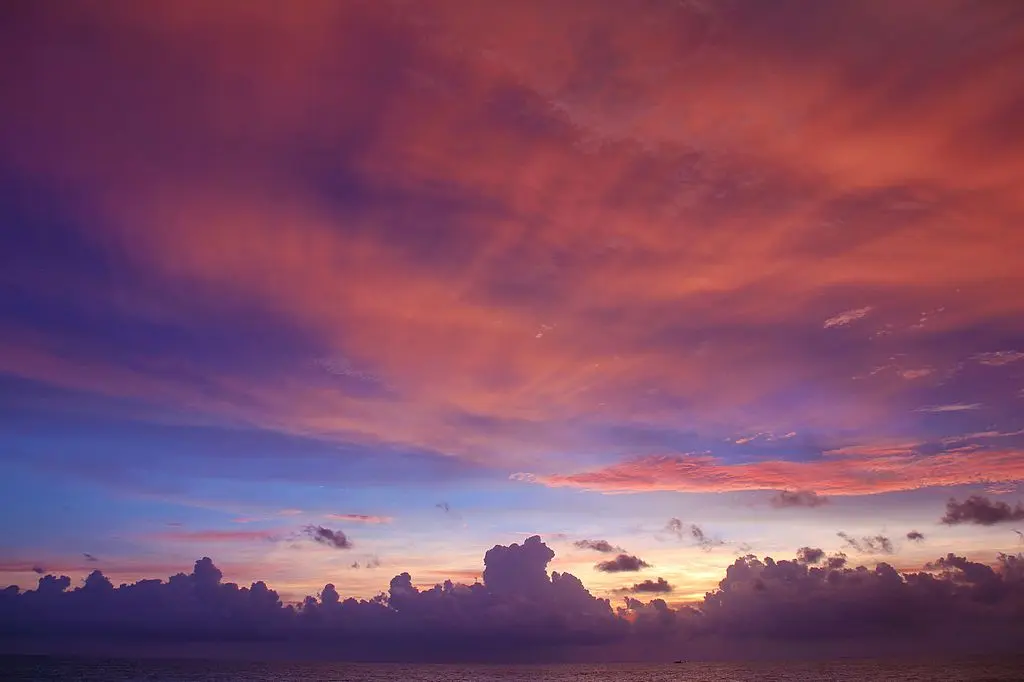
10. Catch the Sunset at Galle Face Green
Galle Face Green offers one of the most iconic sunset views in Sri Lanka. This historic esplanade stretches for half a kilometer along the Indian Ocean, providing a communal space where the sky, sea, and city meet.
It’s a place where the vibrant life of Colombo pauses to witness the day’s end, making it a must-visit for anyone looking to experience the city’s natural beauty.
As the day wanes, everyone gathers at Galle Face Green, drawn by the promise of a spectacular sunset. The sound of the waves, the cool ocean breeze, and the rustle of palm trees add to the ambiance, creating a serene backdrop that contrasts with the bustling city behind.

11. Shop at Pettah Floating Market
Situated on Beira Lake, Pettah Floating Market offers a unique shopping experience, floating gently on the water’s surface, with vendors selling their goods from boats and stalls on platforms over the lake.
Opened in 2014 as part of a project to beautify the area and provide a structured space for street vendors, the floating market has quickly become a favorite spot. It’s a place where the vibrancy of Colombo’s street market culture is combined with the tranquility of a lakeside setting, creating an ambiance unlike any other.

12. Take a Trip to Seethawaka Wet Zone Botanical Gardens
The Seethawaka Wet Zone Botanical Gardens is a verdant paradise that beckons nature lovers. Opened to the public in 2014, this relatively new addition to Sri Lanka’s botanical treasures spans approximately 106 hectares, dedicated to the conservation and showcasing of the wet zone’s rich biodiversity.
The gardens lie in the shadow of the Seethawaka River. This region’s high rainfall and humid conditions create an ideal environment for a wide variety of flora, particularly those endemic to Sri Lanka’s wet zone, making it a living repository of the island’s botanical heritage.

13. Admire Beira Lake
Once sprawling over a much larger area and used for defense purposes by the Portuguese in the 16th century, Beira Lake has been transformed into a picturesque urban park.
The lake is surrounded by a well-maintained walkway, lush greenery, and modern urban architecture. A leisurely stroll around Beira Lake offers not only scenic views but also a glimpse into the daily lives of Colombo’s residents, who come here to jog, meditate, or simply enjoy a moment of quiet.
One of Beira Lake’s most iconic landmarks is the Seema Malaka temple, a Buddhist temple situated on an island in the middle of the lake.
Designed by the renowned Sri Lankan architect Geoffrey Bawa, drawing inspiration from the country’s ancient temple designs.
14. Visit the Art Galleries
Colombo’s art scene is dynamic, offering a range of galleries that showcase the works of both established and emerging artists. Here are some notable galleries that you should not miss:
- Saskia Fernando Gallery: As one of the leading contemporary art galleries in Colombo, Saskia Fernando Gallery represents a wide spectrum of Sri Lankan artists. With a keen eye for cutting-edge art, the gallery hosts an impressive collection that spans various mediums, including painting, sculpture, video, and installation art.
- Paradise Road Galleries: Founded by the renowned designer and entrepreneur Shanth Fernando, this gallery complements the adjacent boutique and café, creating an immersive cultural experience. The exhibitions here rotate regularly.
- Barefoot Gallery: Barefoot Gallery is more than just an art space; it’s a cultural institution that has nurtured the city’s artistic community for decades. Its laid-back atmosphere and eclectic mix of artworks, textiles, and crafts make it a very popular spot.

15. Eat Traditional Sri Lankan Cuisine
One cannot truly experience Sri Lanka without indulging in its food, which is as much a feast for the senses!
At the heart of Sri Lankan dining is the iconic rice and curry, a daily staple that offers a kaleidoscope of flavors, from fiery meat and fish curries to an array of delicately spiced vegetable dishes, each prepared with a unique blend of local spices.
Hoppers, or appa, are another culinary delight. These bowl-shaped pancakes, made from fermented rice flour and coconut milk, feature a crispy edge and a soft, fluffy center. Whether enjoyed plain, with an egg cracked in the middle, or accompanied by sweet or savory fillings, hoppers are a versatile dish!
For those wandering the bustling streets of Colombo and beyond, kottu roti offers a taste of Sri Lankan street food at its best. This hearty dish, made by stir-frying chopped flatbread with vegetables, egg, meat, and spices, is as much a treat for the ears as it is for the palate, with the rhythmic chopping sound of its preparation being a common echo in the night.
Where to Stay in Colombo
While most travelers end up skipping Colombo to go straight to the Cultural Triangle such as Polonnaruwa, Dambulla, and Sigiriya, I must say that to truly appreciate the vibrant capital of Sri Lanka, an overnight stay is highly advisable. Though Habarana isn’t that bad as well!
Here are some of the most recommended places to stay in Colombo:
Best Hotels in Colombo:
- Marino Beach Colombo – provides a range of amenities including an outdoor pool, fitness center, lush garden, and terrace. It features convenient services such as a restaurant, room service, 24-hour front desk, free WiFi, ATM, concierge, and currency exchange. The air-conditioned rooms are well-equipped with a desk, electric kettle, minibar, safe, flat-screen TV, balcony, and a private bathroom with a bidet, complemented with bed linen and towels.
- Sayura House – a more recent addition and already quite highly rated, comes with complimentary WiFi across the premises and free private parking. Every room comes equipped with its own bathroom.
- Taprobane House – offers facilities including an outdoor swimming pool, complimentary private parking, a terrace, and an on-site restaurant. The property is equipped with amenities such as a tour desk, luggage storage, free WiFi, room service, concierge service, and currency exchange. Each guest room is air-conditioned and features a seating area, flat-screen TV with cable channels, safety deposit box, and a private bathroom equipped with a bidet, complimentary toiletries, and a hairdryer.
Best Hostels in Colombo:
- Drop Inn Hostels – provides free Wi-Fi across all areas, with a selection of clean and modern private or dormitory rooms in the city’s heart. These spacious rooms are equipped with air conditioning and bathrooms featuring hot water. Complimentary bed linen and toiletries are provided, with dormitory beds also having a reading light and power sockets. The hostel features a garden terrace lounge, balcony, and a shared kitchen equipped with cooking amenities like a stove, microwave, and kitchenware. There’s a cafe area for breakfast and coffee.
- Clock Inn Dehiwala – the inn aims to offer even more affordable prices for its valued backpacker guests. Designed with spaciousness in mind, Clock Inn Dehiwala boasts airy spaces, a comfortable lounge, balconies, and a tranquil courtyard. The accommodation includes separate female and mixed dorm rooms with 4 to 12 beds per room, shared bathrooms with hot showers, air conditioning, private lockers, and free Wi-Fi. The lobby and lounge area provide a work station with free internet, pantry access, breakfast/tea/coffee, cable TV, and other entertainment facilities, all complemented by free Wi-Fi access.
- Ceylon StayZ – provides comfortable and affordable accommodation with options like 6-Bed Female and Mixed Dormitory Rooms (with and without A/C) and an 8-Bed Mixed Dormitory Room (A/C). Facilities include a cozy lounge area, shared kitchen, free Wi-Fi, clean shared bathrooms, linen and towel service (towels at a nominal fee), secure baggage storage, CCTV security, laundry service (at a fee), and a 24-hour reception.
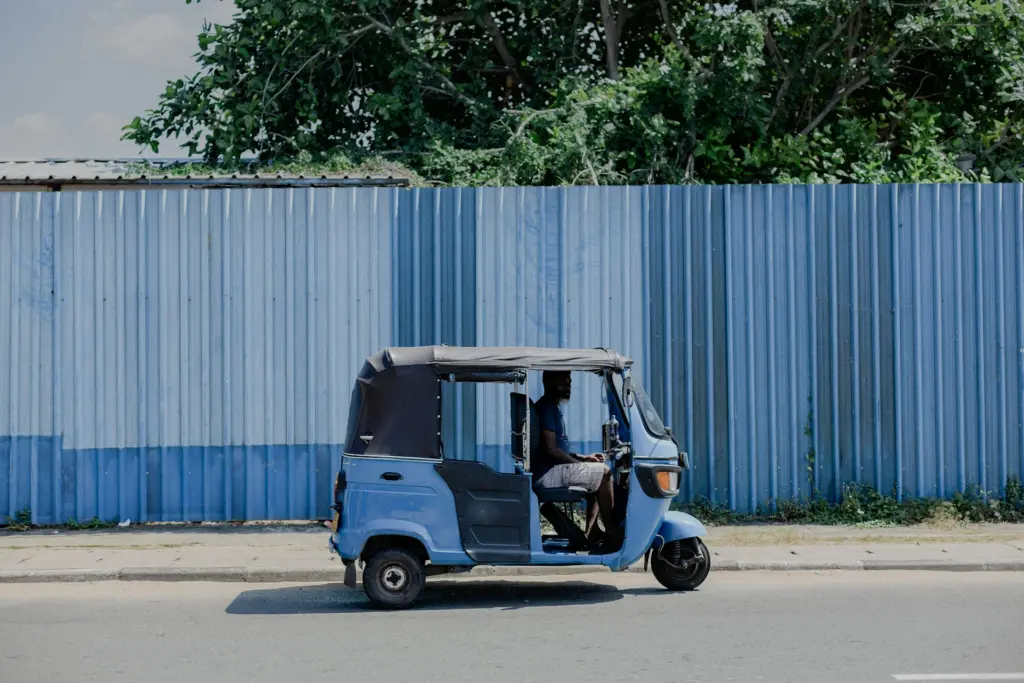
How to Get Around Colombo
Getting around Colombo offers various options catering to different preferences, time constraints, and budgets. Here’s a concise guide to navigating the city efficiently:
- Tuk-Tuks: These three-wheeled vehicles are ubiquitous in Colombo and provide a fast and flexible way to navigate the city’s streets. They’re ideal for short distances and offer an authentic local experience. It’s advisable to agree on the fare before starting your journey.
- Buses: Colombo’s bus network is extensive and cost-effective, covering virtually every part of the city and its suburbs. Buses are a great way to travel like a local, though they can be crowded and hot. There is an air-conditioned bus going to and from the airport, however.
- Trains: The train system in Colombo connects to various parts of the city and offers scenic routes, especially along the coast. Trains are a reliable and affordable option for longer distances within the city or to nearby destinations. Be mindful of peak hours when trains can be particularly crowded.
- Taxis: For more comfort and convenience, taxis and ride-hailing services like Uber and PickMe are available in Colombo.
- Car Rentals: Renting a car with a driver is a common and convenient way to explore Colombo and beyond, particularly for groups or families. It offers flexibility and the comfort of air-conditioning, though it’s the most costly option.
How to Stay Safe in Colombo
While Sri Lanka’s people are known for their warmth, like any destination, it has its risks. The hygiene standards can vary, so opting for bottled water and choosing reputable dining places can help avoid health issues.
When exploring, be cautious with transportation; ensure your tuk-tuk driver is sober, and when using public transport or renting vehicles, be prepared for roads that can be unpredictable.
Be mindful of petty crimes such as pickpocketing, especially in crowded places, and consider using cash to avoid credit card fraud.
Female travelers should exercise caution, particularly at night or when alone, as instances of harassment have occurred.
Health-wise, dengue fever is a risk, particularly during the monsoon season. Protecting yourself against mosquito bites is essential, with repellents and suitable clothing.
Given these considerations, securing reliable travel insurance like SafetyWing can provide peace of mind, covering you from unforeseen health issues to travel mishaps.

Best Time to Visit Colombo
The best time to visit Colombo is between December and March. During these months, the city experiences dry weather, with average temperatures ranging from 22°C – 31°C (72°F – 88°F). This period offers pleasant conditions for exploring the city’s attractions, enjoying its beaches, and participating in outdoor activities.
Plan Your Trip to Sri Lanka | Best Travel Resources
Book Your Accommodations
- Booking.com – the world’s leading online booking platform for accomodations around the world, they have an extensive amount of available listings with zero booking fees and best price guarantees.
- Hostelworld – a backpacker’s best friend, Hostelworld has the largest collection of hostels and guesthouses for affordable prices.
Don’t Forget Insurance
- SafetyWing – from Nomad Insurance, an insurance by nomads for nomads. They understand our lifestyle well and have really comprehensive and flexible plans that cater to any traveler.
Find Cheap Flights
- Kiwi.com – my go-to for booking and finding the cheapest flights and it’s helped me save tons of money. They do virtual interlining which is connecting flights from airlines that do not codeshare, so you can find routes that you wouldn’t be able to find normally.
Join Tours & Activities
- GetYourGuide – is one of the best places to find unique tours and activities. I found that it’s an excellent way to meet fellow travelers and create fond memories. They are not only limited to tours as they also offer niche services such as skip-the-line tickets or private transfers.
Catch a Ride
- Rentalcars.com – nothing beats the freedom of the road, Rentalcars.com is the world’s largest online car rental service. They operate across 160 countries so they’re the perfect partner to work with if you find yourself wanting a ride.

